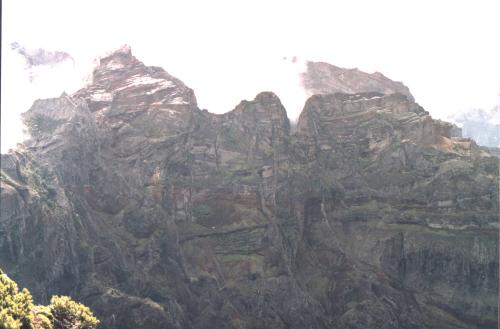
Under the supervision of: B. Platevoët, laboratoire de Volcanisme et Pétrologie, Paris XI

Madeira Island is in the Northern Atlantique Ocean, near the Marrocco's coast. It is at the end of a volcanic islands and seamount's tracks, forming the Madeira Archipelago. His volcanic hotspot activity is recent, since 5 My until 500 000 years. Six stages build Madeira Island, forming six complexes. On the island, we observed many dykes cuting all the complexes. Petrological studies of samples from the whole island, allowed us to compare and relate dykes and lavas mineralogy. Dykes are lava's supply pipes. Furthermore we compared dyke's edge and core. Plagioclases are the only mineral which present chemical variations. In the dyke's core we founded bytownite. In the dyke's edge we found labrador. Dyke's core is more sodic than the edge. The others minerals don't present chemical variations, so it doesn't rule out another possibility, which can explain the plagioclases variations. We also observe that the size of minerals increase from the edge to the core of the dyke.
| Pic Areeiro (1818 m), lava flows of B1 complexe (Miocene, 5 Ma) cut by basaltics dykes. >>> |
| Crédit photo : | Dyke de l'île de Madère, ©Y. PECOURT (2001). |
| Pico de Areeiro, Madère, ©Y. PECOURT (2001). |